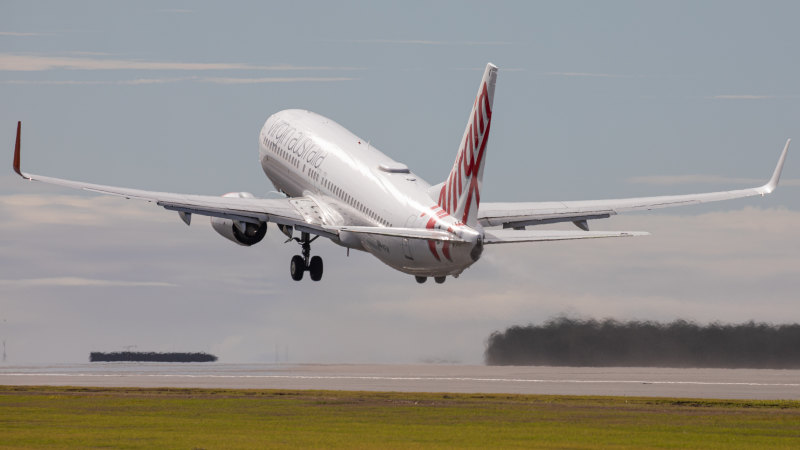The ability to repay debt using earnings, for example, is back to pre-pandemic levels and will strengthen through 2025, according to data compiled by Bloomberg. That means airlines are more able to weather periodic demand shocks, like the one that undid Virgin Australia, and less likely to default.
“Considering the doom and gloom forecast during the pandemic, the industry is doing quite well,” said Volodymyr Bilotkach, associate professor in aviation management at Indiana’s Purdue University and author of the book The Economics of Airlines. “Following crises, some airlines emerge in better shape than before.”
Loading
The rejuvenation hasn’t been uniform. Norway’s Flyr this month filed for bankruptcy less than two years after starting flying. Days earlier, British low-cost carrier Flybe ceased operations after collapsing into administration.
The failures are more closely aligned with Warren Buffett’s assessment of the industry more than a decade ago. “The worst sort of business is one that grows rapidly, requires significant capital to engender the growth, and then earns little or no money,” the Berkshire Hathaway chairman wrote in an annual investor letter. “Think airlines.”
What’s different now is the huge gulf between limited available seats on aircraft and the public’s strong appetite for travel, which is allowing airlines to supercharge fares.
“The supply-demand dynamics are as different than they’ve ever been in my career,” United Airlines Chief Executive Officer Scott Kirby said on an earnings call last month. “Every data point keeps demonstrating it over and over again. I think margins across the board are going to be higher.”
Reporting record fourth-quarter revenue last month, American Airlines CEO Robert Isom said navigating the pandemic had made the carrier more efficient – its fleet is simpler and the network focuses on the most profitable flights. “This is our best-ever post-holiday booking period,” he said. “We expect the strong demand environment to continue in 2023.”
‘Considering the doom and gloom forecast during the pandemic, the industry is doing quite well. Following crises, some airlines emerge in better shape than before.’
Aviation Management Professor Volodymyr Bilotkach
The demand surge coincides with constrained labour supply. For many passengers, that’s translated into long queues at understaffed check-in counters or lengthy waits at baggage carousels. For investors, it means some of the airlines they own are generating more than twice as much revenue per worker than they were two years ago.
Ryanair, Europe’s largest discount airline, returned to profit in the quarter through December and sees no end to its lucrative run. “We will deliver record profits in the current financial year, and we would expect to continue to grow profitably into next year and beyond,” Chief Financial Officer Neil Sorahan said in an interview.
The Dublin-based airline ordered dozens of fuel-efficient Boeing Max jets during the slowdown.
Virgin Australia provides perhaps the sharpest “then-and-now” contrast.
For the best part of a decade before the pandemic, the airline reported annual losses, burned through shareholder capital each year, and occasionally asked investors for more money.
Under Bain’s ownership, Virgin Australia has cut thousands of jobs, got rid of long-distance planes, and now flies only shorter-haul Boeing 737s. CEO Jayne Hrdlicka – former boss of Qantas’s low-cost airline Jetstar – has reined in spending on lounges and scaled back international routes.
Loading
“Their cost management is far superior,” said Neil Hansford, chairman of Australian consultancy Strategic Aviation Solutions. “Virgin is skinnier.”
Now the airline is planning what could be one of Australia’s biggest listings of the year. Bain has picked Goldman Sachs, UBS and Barrenjoey as lead managers for the possible share sale, a person familiar with the matter said last week.
In an email to staff on January 31, Hrdlicka said revenue was about $2.5 billion in the six months through December, with a profit margin of around 5 per cent. The airline’s first profit in years “is certainly a milestone to quietly celebrate,” she wrote.
Bloomberg
Stay connected with us on social media platform for instant update click here to join our Twitter, & Facebook
We are now on Telegram. Click here to join our channel (@TechiUpdate) and stay updated with the latest Technology headlines.
For all the latest Business News Click Here
For the latest news and updates, follow us on Google News.

